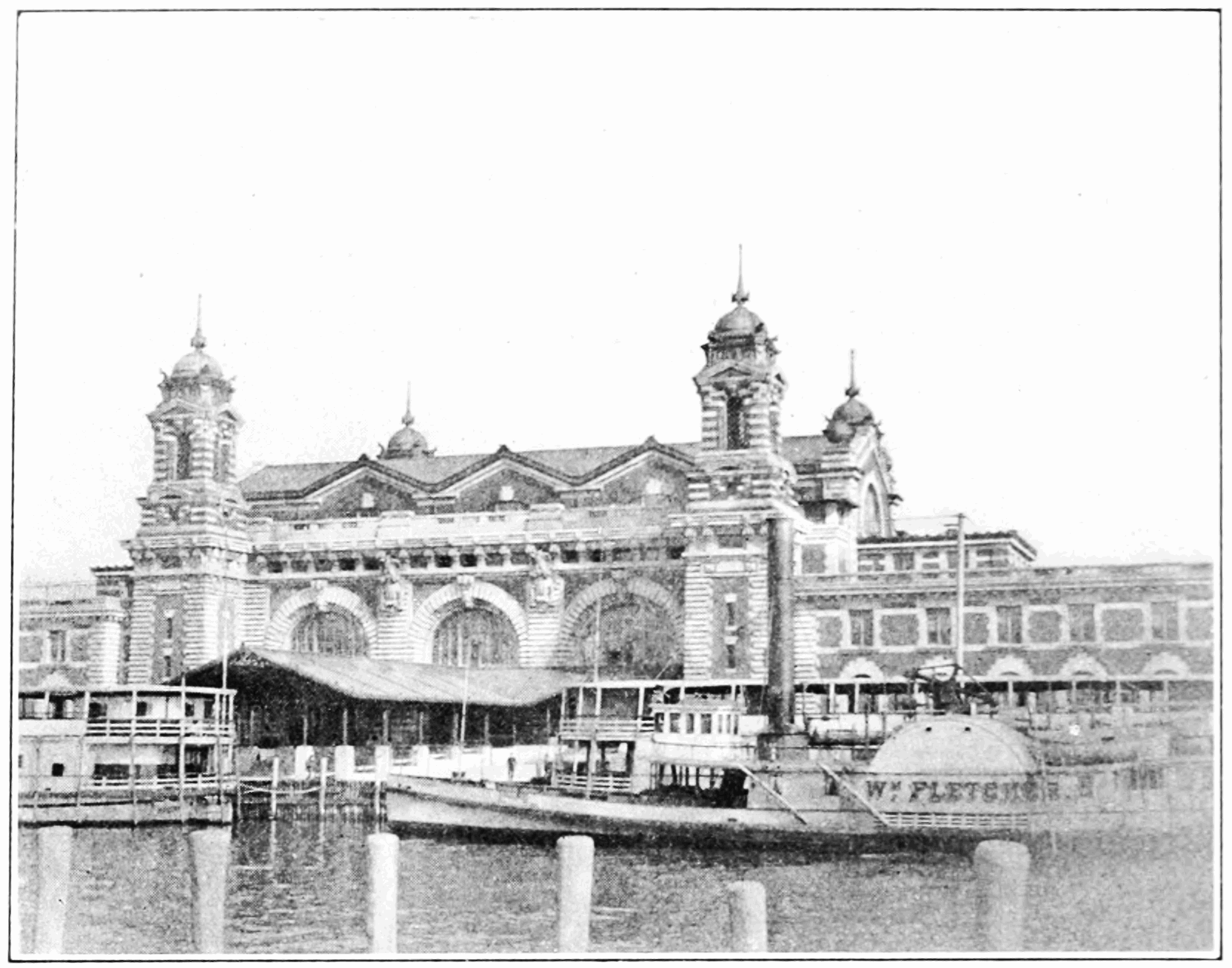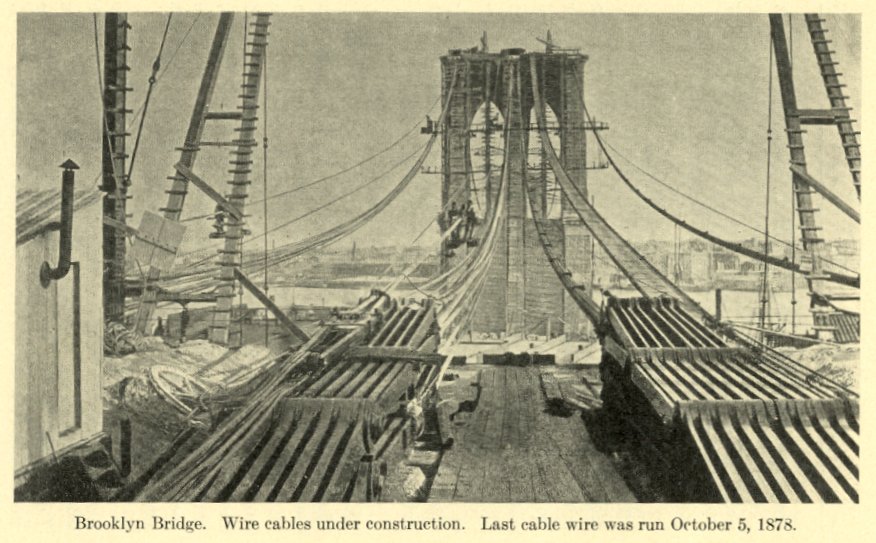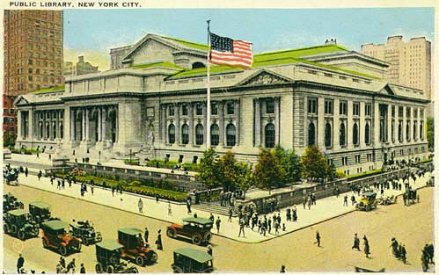This is a chapter from the public domain book “Lights and Shadows of New York City” produced originally in 1872. If you have any questions about the reference material please leave a comment below.
It is said that there are more than forty thousand women and girls in New York dependent upon their own exertions for their support. This estimate includes the sewing women, factory girls, shop girls, female clerks, teachers, and governesses. They all labor under two common disadvantages. They are paid less for the same amount of work than men, and being more helpless than men are more at the mercy of unscrupulous employers. The female clerks and shop girls receive small wages, it is true, but they are generally paid regularly and honestly. The sewing women and factory hands are usually the most unfortunate, and these constitute the great bulk of the working women of New York. Many of these are married, or are widows with children dependent upon them for support.
The life of the New York working woman is very hard. She rises about daybreak, for she must have breakfast and be at her post by seven o’clock, if employed in a factory or workshop. At noon she has a brief intermission for dinner, and then resumes her work, which lasts until 6 o’clock in the evening. You may see them in the morning, thinly clad, weary and anxious, going in crowds to their work. They have few holidays except on Sunday, and but few pleasures at any time. Life with them is a constant struggle, and one in which they are always at a disadvantage. The sewing girls are in the majority, and there are two classes of these—those who work in the rooms of their employers and those who work at home. The former we have included in the general term of factory hands. The factory girls earn from two to four dollars a week, as a rule, a sum scarcely sufficient to keep body and soul together, but they get their wages promptly and consider themselves fortunate. Men doing the same work would receive about twice as much.
The sewing women who work at home are worse off. They live in the poorer class of tenement houses, and are surrounded with discomfort of every kind. They work as hard as, if not harder than their sisters in the factories, and are even worse paid. They have not the advantage of being compelled to undertake the exercise of walking to and from the factories which the latter enjoy. They sit in their wretched rooms all day, and often late into the night, sewing for a miserable pittance, and for some scoundrel who will perhaps swindle them out of their hard earnings. For making blue cotton shirts, or “hickories” as they are called, a woman receives six cents apiece, and must furnish her own thread; for making linen coats she receives from fifteen to twenty cents apiece; for men’s heavy overalls she gets sixty-two cents a dozen; for flannel shirts one dollar a dozen. These prices are not paid by the Jews alone, but by reputable Broadway dealers, men who style themselves “leading merchants.” No wonder they pile up such large fortunes.
Now, in order to pay the rent of her bare and cheerless room, the sewing woman must make two whole shirts a day. Then she must do work enough to provide for her other expenses. She has to buy fuel in the winter, and kindling wood costs her three cents a bundle and coal fifteen cents a pail. Perhaps she has children, or a sick and helpless, or, worse still, a drunken husband to provide for. All out of her beggarly wages. Her food consists almost entirely of bread and potatoes, and sometimes she treats herself to the luxury of a cup of tea without milk or sugar. If she owns a sewing machine, and very few do, she can earn more than one who sews by hand, but constant work at the machine means a speedy breaking down of her health and a lingering death, or a transfer to the charity hospital.
Small as are her wages, the working woman is not always sure of receiving them. Some rascally employers—and one of the institutions to be mentioned further on, could give a long list of them—will, upon receiving the work, find fault with the sewing, and either deduct a part of the poor creature’s wages for the alleged fault, or refuse point blank to pay her a cent. Others again will demand a deposit equal to the value of the materials taken home by the sewing women. Upon the return of the completed work, they will not only refuse the promised payment, alleging that the work is badly done, but will also refuse to return the money advanced by the woman. The wretch well knows that the woman is weak and helpless, and that she is ignorant of the mode of protecting herself. More than this, she has not the money to go to law.
These are simple facts, and not “sensational items.” The records of the “Working Women’s Protective Union” will corroborate them, and will furnish many others.
“Among the employés of a certain Israelitish manufacturer of straw goods in New York was a poor French woman, who, with her three small children, occupied apartments in a rear tenement house in Mulberry street. What renders this case of more than ordinary interest, is the fact that the lady had once been in affluent circumstances, and at one period of her life moved in the wealthiest circles of Paris. Misfortune befel her in the death of her husband, who was accidentally killed upon a railroad train. The bulk of the property of her deceased husband was seized upon by her creditors. The widow, however, succeeded in saving from the general wreck a few hundred dollars, and with this she emigrated to America, arriving here in the spring, and bringing with her three little children. Here she anticipated she would be enabled, with the aid of her superior education, to provide for herself and family. For several weeks her efforts at securing employment proved unavailing; but just before her last dollar was expended, she succeeded in forming a class in French, which she instructed for two months, at the expiration of which time she was deprived of this her only support—her pupils leaving her for the purpose of a summer’s holiday at the fashionable watering-places. Other efforts were made to secure the position of teacher of languages (with several of which she is conversant), but all to no effect. Finally, reduced to absolute want, the lady was obliged to resort to manual labor in order to provide herself and little ones with bread. Unused as she was to toil, her efforts to obtain employment were attended with little or no success. Day by day her case grew more desperate, until, at last, unable to pay the rent of her miserable attic apartment, she and her little ones were thrust into the street. Homeless and friendless, with not sufficient money wherewith to purchase a supper for herself and famishing little ones, the lady was forced to beg; which course, up to this time in her unfortunate career, she had looked upon as barely preferable to death itself. She had a few acquaintances among the parents of her former pupils, and to these she resolved to apply for aid. Her efforts in this direction were but a repetition of the old, old story. Her friends, who, during her prosperity, were lavishing their attentions on her, now that misfortune had overtaken her, refused to recognize her, and thrust her from their doors without a penny. Fortune relented one day, and rewarded her efforts with a situation in a manufactory of straw goods. To be sure, the compensation was small; still, as bread enough might be secured in this manner to keep the wolf from the door until something better might present itself, she resolved to accept the terms of the straw manufacturer, and entered upon her duties. For a week or two the sum earned by the unfortunate lady was faithfully paid her, but on the third week the pusillanimous nature of the Jew cropped out. She had bargained to manufacture straw hats at eighty cents a dozen, or six and two-third cents each. At this rate, she managed to earn two dollars and fifty cents per week. Upon applying for her wages at the close of the third week, the employer informed her that he had discovered that six and two-thirds cents apiece was too large a compensation, and that from eighty cents he had resolved to reduce her pay to seventy cents per dozen, and accordingly presented her with her weekly payment, first deducting one dollar and forty cents from her wages. Pressed as she was for money, the lady refused to accept these terms, and at once set about seeking legal redress. Learning that at the ‘Working Women’s Union’ of Bleecker street legal advice was furnished free of charge to such as herself, she laid her grievances before the officers of the institution, who at once placed the affair in the hands of their legal adviser, who soon brought the rapacious Israelite to terms. At the time of her application to the institution the lady stated that she had been without fire, and, with the exception of a small loaf or two of bread and what few potatoes her children were enabled to gather from about the stalls in several of the markets, without food for several days.”
The wrongs inflicted upon the working women are many. “There are hoop-skirt manufactories where, in the incessant din of machinery, girls stand upon weary feet all day long for fifty cents. There are photograph galleries—you pass them in Broadway admiringly—where girls ‘mount’ photographs in dark rooms, which are hot in summer and cold in winter, for the same money. There are girls who make fans, who work in feathers, who pick over and assort rags for paper warehouses, who act as ‘strippers’ in tobacco shops, who make caps, and paper boxes, and toys, and almost all imaginable things. There are milliners’ girls, and bindery girls, and printers’ girls—press-feeders, book-folders, hat-trimmers. It is not to be supposed that all these places are objectionable; it is not to be supposed that all the places where sewing-girls work are objectionable; but among each class there are very many—far too many—where evils of the gravest character exist, where the poor girls are wronged, the innocents suffer. There are places where there are not sufficient fires kept, in cold weather, and where the poor girl, coming in wet and shivering from the storm, must go immediately to work, wet as she is, and so continue all day. There are places where the ‘silent system’ of prisons is rigidly enforced, where there are severe penalties for whispering to one’s neighbor, and where the windows are closely curtained, so that no girl can look out upon the street; thus, in advance, inuring the girls to the hardships of prison discipline, in view of the possibility that they may, some day become criminals! There are places where the employer treats his girls like slaves, in every sense of the word. Pause a moment, and reflect on all that signifies. As in the South ‘as it was,’ some of these girls are given curses, and even blows, and even kicks; while others are special favorites either of ‘the boss,’ or of some of his male subordinates, and dress well, pay four dollars a week for board, and fare well generally—on a salary of three dollars a week.”
Is it a wonder that so many of the working women and girls of New York glide into sin, with the hope of bettering their hard lot? And, when thrown out of work, with no food or shelter, save what can be obtained by begging or at the Station House, is it a wonder that they seek the concert saloons, in sheer desperation, or join the street walkers on Broadway?
But if the working woman has her persecutors, she has also her friends in the great city. One of the best institutions which have been organized for the protection and assistance of this class is the “Working Women’s Protective Union,” the head-quarters of which are in Bleecker street, a short distance east of Broadway. It is organized for the common benefit of all those women who obtain a livelihood by other employments than household services. It aids them:
“First. By securing legal protection from frauds and impositions free of expense. Second. By appeals, respectfully but urgently made, to employers for wages proportioned to the cost of living, and for such shortening of the hours of labor as is due to health and the requirements of household affairs. Third. By seeking new and appropriate spheres of labor in departments not now occupied by them. Fourth. By sustaining a registry system, through which those out of work may be assisted in finding employment. Fifth. By appeals to the community at large for that sympathy and support which is due to working women.”
The members each contribute the sum of ten dollars annually to the support of the institution. Outside aid is also liberally given. The Union has done much good since its organization. It has compelled dishonest employers to fulfil their contracts with their operatives, and in one single week compelled the payment of the sum of three hundred and twenty-five dollars, which had been withheld by these scoundrels. Out of two hundred complaints against employers in a single year, it secured a fair settlement of nearly two-thirds. In 1869 it procured work for 3379 women and girls. It also looks after friendless and homeless women who seek its assistance, and helps them to secure employment.

The “Home for Working Women,” No. 45 Elizabeth street, is a massive brick building, six stories high, and will accommodate about five hundred boarders. It is supplied with a reading-room, a reception-room, a parlor, a restaurant, and a laundry. The upper floors are used as dormitories. The beds are neat and tidy, and are arranged in rows and separated from each other by white screens. The rooms are large and well ventilated, and the whole establishment is kept scrupulously clean and in perfect order. One dollar and twenty-five cents is the charge for a week’s lodging and washing. The restaurant supplies meals of an excellent quality at an average cost of twenty-five cents. Lodgers are admitted until eleven o’clock at night at the price named. If they enter after that hour, they are charged twenty-five cents extra.
The Children’s Aid Society conducts several lodging-houses for girls, one of which is located in Bleecker street, and the other at 27 St. Mark’s Place. They furnish beds and meals to girls of all ages, at five cents each, while they have money, and give them for nothing where the applicant is found to be destitute. They have been tolerably successful thus far, and give promise of future usefulness.
There are several other associations, with similar objects, in operation in the city.
Mr. A. T. Stewart is now erecting, on Fourth avenue, a magnificent iron building, which is to be used as a “Home for Working Women.” The building extends along the avenue, from Thirty-second to Thirty-third street, a distance of 192 feet, and has a depth of 205 feet. Including the central Mansard roofs, the building is eight stories in height. It is one of the finest edifices in the city, and will be provided with every convenience for the work to which it is destined. It will be capable of accommodating fifteen hundred boarders, and will be conducted on a plan similar to that of the “Home for Working Women” in Elizabeth street. It is not to be conducted as a charity. Each occupant is to pay a fixed sum per week; and it is believed that here this sum will not exceed two dollars a week for board, lodging, and washing.
















































